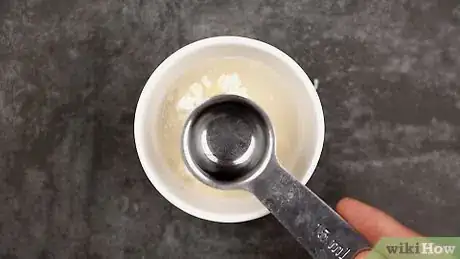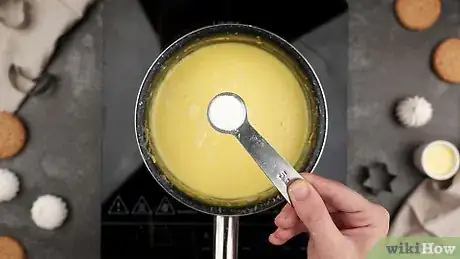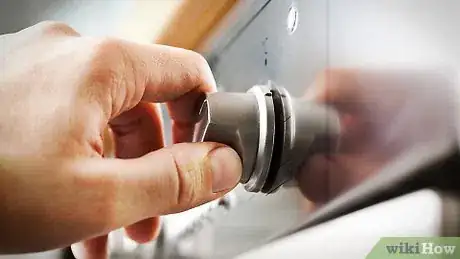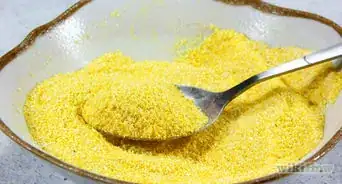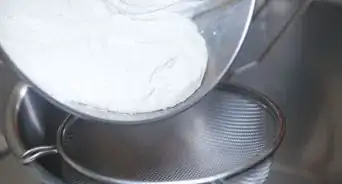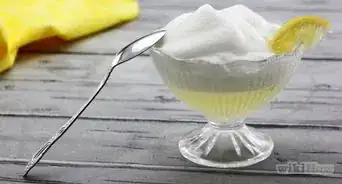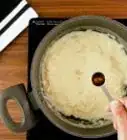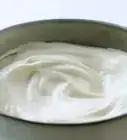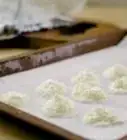This article was co-authored by wikiHow Staff. Our trained team of editors and researchers validate articles for accuracy and comprehensiveness. wikiHow's Content Management Team carefully monitors the work from our editorial staff to ensure that each article is backed by trusted research and meets our high quality standards.
The wikiHow Video Team also followed the article's instructions and verified that they work.
This article has been viewed 104,140 times.
Learn more...
Custard is typically an egg-yolk-based sweet cream dessert that can stand on its own or as an ingredient in other desserts (like creme brulee or pie, for example). If you've tried making custard from scratch, you already know that sometimes it takes a few tries to master making a dessert that tastes good. Before hanging your whisk up in frustration, try either adding one thickening agent to your ingredients, or try changing your original recipe by varying your cooking time or preparation method.
Steps
Using a Thickening Agent
-
1Add flour and cold water mix to custard ingredients. Mix flour and cold water well, making sure the mixture is smooth. For 1 cup (240 mL) of custard, use 2 tablespoons (17 g) of flour mixed with 4 tablespoons (59 mL) of cold water.[1] Add the mixture into your custard ingredients as they cook on the stove.
-
2Use cornstarch as an alternative to flour. Cornstarch, like flour, requires cold water as a mixing agent. For 1 cup (240 mL) of custard, use 1 tablespoon (7.5 g) of cornstarch mixed with 1 tablespoon (15 mL) of cold water.[2]
- Also like flour, make sure to add your cornstarch mix as your ingredients are cooking on the stove.
Advertisement -
3Use tapioca instead of flour or cornstarch. You will need less tapioca than flour or cornstarch, as tapioca does not need to be combined with cold water to add to your custard. Use about 1 teaspoon (4.9 mL) of tapioca for every 1 tablespoon (7.5 g) you would use of cornstarch.[3]
- Tapioca, like flour or cornstarch, should be added while you are cooking your custard on the stovetop.
Varying Your Cooking Time or Preparation Method
-
1Increase stovetop cooking time. If you've tried a few recipes and your custard is still runny, thicken your custard by increasing the stovetop cooking time (instead of adding a thickening agent). Follow your recipe stovetop cooking time, right up until the custard starts bubbling. Once your custard starts bubbling, add 1 to 2 minutes of cook time, and stir constantly![4]
-
2Decrease oven cooking temperature. While some custards will need to be cooked longer on the stovetop to thicken (to give the ingredients a better chance at binding together), others need to be cooked on a lower oven temperature than what the original recipe calls for. Check if your original recipe recommends a certain oven temperature for your sea level or for the season you're cooking in.
- Decrease your oven's temperature and cook your custard until the center is slightly wobbly when nudged.[5]
-
3Stir more vigorously before cooking custard in the oven. While this step sounds like a no-brainer, you may not be stirring your custard enough for the egg-yolks to break down and start binding with the other ingredients (stirring is essential to create the fluffy cream texture). Stir as recommended by your original recipe, but if your custard is still runny, try more vigorous stirring.
- Make sure to use the appropriate tool, such as an immersion blender or a hand whisk.[6]
Warnings
- Double-check that any additional ingredients adhere to your diet and lifestyle (vegan, keto, dairy-free, etc.).⧼thumbs_response⧽
References
- ↑ https://www.bhg.com/recipes/how-to/cooking-basics/thickening-with-cornstarch-or-flour/
- ↑ https://www.bhg.com/recipes/how-to/cooking-basics/thickening-with-cornstarch-or-flour/
- ↑ https://www.myrecipes.com/how-to/cooking-questions/constarch-substitutes
- ↑ https://www.craftybaking.com/learn/baked-goods/custard/problems-and-solutions
- ↑ https://www.craftybaking.com/learn/baked-goods/custard/problems-and-solutions
- ↑ https://www.craftybaking.com/learn/baked-goods/custard/problems-and-solutions
